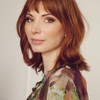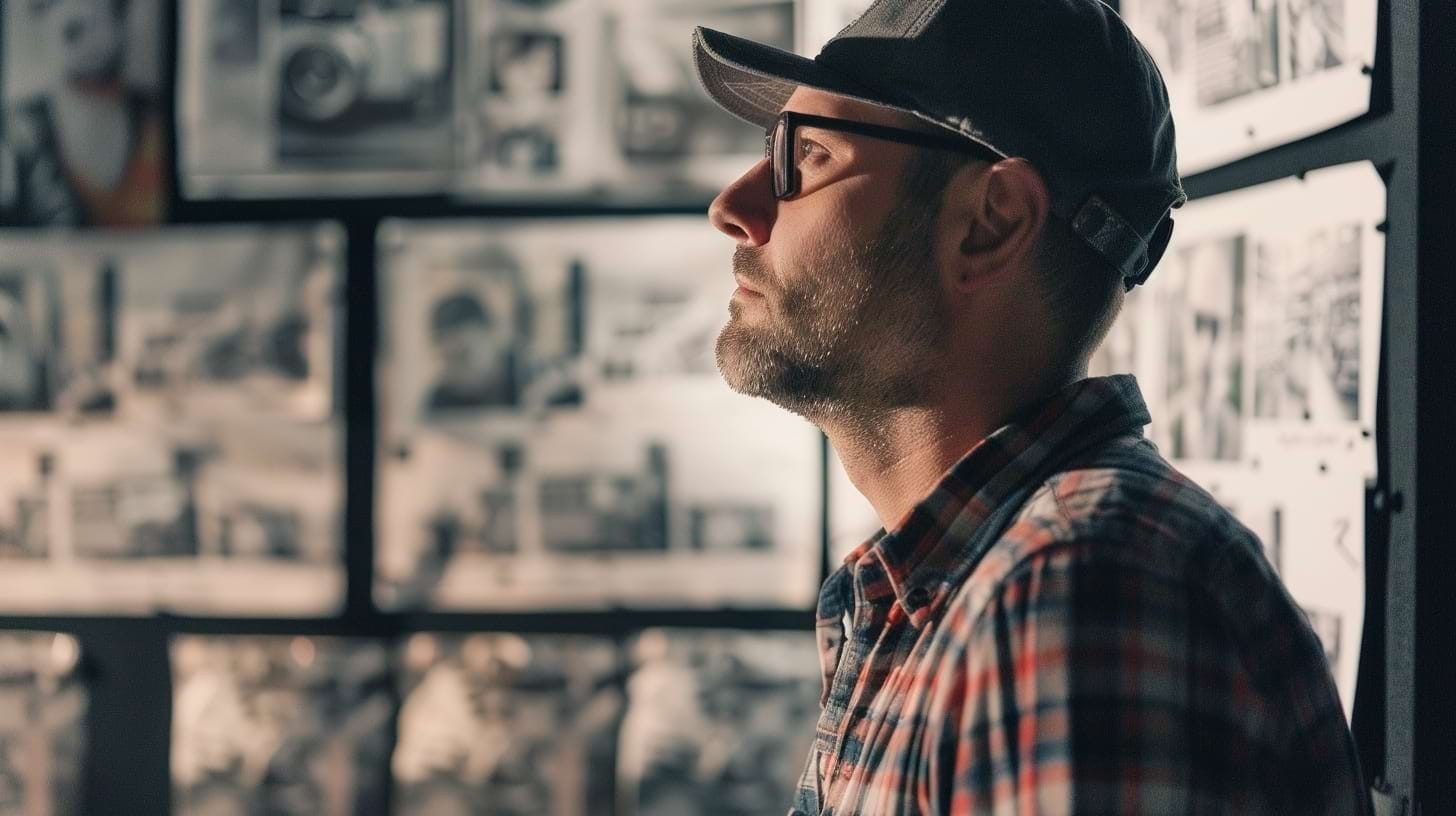The Power of Storyboarding and Directorial Approaches
Storyboarding is a core of visual planning and creative expression of directors' thoughts. It empowers directors to solidify their creative vision, plan each scene, and communicate their artistic intent by translating the narrative into illustrated panels.


Storyboarding is more than a collection of sketches; it's a meticulously crafted roadmap that bridges the gap between imagination and execution.
Storyboarding gives control to the director and fosters a deeper understanding of the narrative flow, ensuring a cohesive and impactful final product.
Furthermore, storyboarding is a powerful communication device, contributing to collaboration within the filmmaking team. A well-crafted storyboard acts as a universal language, eliminating ambiguity and ensuring everyone understands the director's vision, from cinematographers to actors. This streamlines communication and fosters a sense of shared purpose and creative alignment on set
In essence, storyboarding allows directors to become architects of their cinematic universe.
Understanding Storyboarding: Scene Visualization of Cinematic Storytelling
Storyboarding is creating a sequence of illustrations or images representing the shots planned for a film or video project. It serves as a visual script, breaking down scenes and conveying the director's vision for shot composition, camera movements, and scene transitions.
The main elements of storyboarding in filmmaking include:
🖌️ Shot composition and framing
📏 Camera angles and movements
🎭 Character positioning and actions
💡 Lighting and atmosphere
🔊 Audio cues and dialogue hints
The power of storyboarding lies in its ability to streamline pre-production, facilitate communication between departments, and identify potential issues before costly filming begins. A well-crafted storyboard can save up a film's budget by reducing on-set revisions and reshoots. Effective storyboarding is often preceded by a thorough script breakdown, ensuring that every element is accounted for and that the director's vision is fully realized.

The Evolution of Storyboarding in Filmmaking: From Disney to Digital
Storyboarding's roots trace back to the early days of cinema. In 1908, Winsor McCay, an animator, created a series of detailed drawings for "Gertie the Dinosaur", considered one of the first documented uses of storyboarding in film. ️
Later, the term "storyboard" was coined in the 1930s at Walt Disney Studios.
🎨 Disney's 1933 animated short "Three Little Pigs" is often credited as the first fully storyboarded production, costing approximately $22,000 and grossing over $250,000 during its initial release.
In the 1940s, "Gone with the Wind" (1939) became one of the first live-action films to extensively use storyboards, with production designer William Cameron Menzies creating over 1,500 detailed sketches for the film.

The digital revolution of the late 20th century brought new tools to storyboard artists:
💻 Digital drawing tablets and software (e.g., Photoshop, Storyboard)
🖱️ 3D pre-visualization software
📱 Mobile apps for on-the-go storyboarding
These advancements have made storyboarding more accessible and efficient in cinematic storytelling, allowing for quicker iterations and easier sharing among team members.
How Directors Use Storyboards to Convey Their Creative Vision
Different directors have unique approaches to storyboarding, reflecting their individual styles and creative processes.
Akira Kurosawa
The legendary Japanese director was known for his meticulously painted storyboards, which often resembled works of art in their own right.
Akira Kurosawa's artistic journey was sparked by his innovative elementary school teacher, Tachikawa. This educator's unconventional approach, which nurtured free artistic expression, planted the seeds of Kurosawa's creative aspirations.
In his youth, Kurosawa wanted to become an artist, but he became a director and this is what he said later:
“I cannot help but be fascinated by the fact that when I tried to paint well, I could only produce mediocre pictures. But when I concentrated on delineating the ideas for my films, I unconsciously produced works that people find interesting”.
For his 1985 epic "Ran", Kurosawa spent over a decade creating hundreds of storyboards, each a miniature masterpiece.

Guillermo del Toro
Guillermo del Toro's passion for cinema and macabre tales blossomed during his youth. As a teenager, he began experimenting with short film production, later pursuing education at Guadalajara University.
Throughout the 1980s, he immersed himself in the world of practical effects, eventually co-establishing Necropia, an innovative effects studio. This diverse background in storytelling and technical craftsmanship laid the foundation for del Toro's unique visual style and narrative approach, setting the stage for his future as a visionary filmmaker.
Guillermo del Toro keeps a diary, which reflects his inner world. These creative sketches later formed the basis of his incredible films.

Bong Joon-ho
Pay attention to the storyboards of director Bong Joon-ho of the acclaimed film "Parasite" (2019) and his manner of leaving detailed comments on the storyboards (now published as a book "Parasite: A Graphic Novel in Storyboards").
Born to a visual artist, Bong's childhood was steeped in cinematic experiences and the art of comics. This early passion would later prove invaluable in his ability to craft intricate storyboards. Bong Joon-ho constructs a complete mental blueprint of each film through this meticulous pre-visualization process before the cameras roll.
This approach earned him the nickname "Bongtail", indicating his leisurely, and careful preparation, ensuring a film that hooks audiences.

Ridley Scott
Renowned filmmaker Ridley Scott honed his skills in visual arts at the prestigious Royal College of Art. Scott's artistic prowess, evident in his evocative sketches and illustrations, has been instrumental in bringing his cinematic visions to life.
Scott's collaborators affectionately dubbed his storyboards "Ridleygrams". These visual blueprints often resemble comic book panels, drawing inspiration from American graphic artists. Executed in ink and pencil, "Ridleygrams" employ a distinctive contour-based technique that imbues the images with depth and dimensionality.
What sets these pre-production artworks apart is their remarkable ability to capture the essence of Scott's intended scenes, conveying intricate details and atmospheric nuances with near-photographic precision.
Besides, as Ridley Scott himself says,
“When you haven’t got it on paper and you’re guessing every day, it becomes a real nightmare. The best form of security is to prep. Normally a film of this scale ("Napoleon" (2023)) would take 100 days; we did it in 62”.
Ridley Scott is famous for the fact that he makes films in a shorter time frame, and he considers storyboarding to be one of the success factors.

Techniques and Tools for Effective Storyboarding
There's no one-size-fits-all approach to storyboarding. Techniques range from detailed pencil sketches to digital illustrations. Modern tools like Filmustage offer AI-driven storyboard creation, allowing directors to visualize scenes quickly and adapt to changes on the fly. ✏️ Modern filmmaking tools offer a powerful solution for pre-production storyboarding:
📸 Thumbnail sketches for quick ideation
🖼️ Detailed illustrations for key scenes
🎥 Animatics (animated storyboards) for complex sequences
🧠 AI-assisted storyboarding tools for rapid visualization:
Filmustage
Digital tools like Filmustage have revolutionized the storyboarding process by integrating it with other pre-production tasks. Filmustage's AI-driven script breakdown and scene synopsis generation can inform storyboard creation, ensuring visual consistency with the script's intent.
Boords
Boords emerges as the premier storyboarding platform for cinematic artists, distinguished by its groundbreaking AI-driven scene visualizer. This cutting-edge tool transforms written narratives into computer-generated imagery, drastically expediting the pre-visualization process.
Beyond initial storyboarding, Boords incorporates features like automated pre-viz animation synthesis, complete with dialogue overlays and audio integration, enabling a more immersive preview.
Storyboarder
Storyboarder offers a versatile platform catering to both skilled illustrators and those less confident in their drawing abilities. Experienced artists can initiate their projects on a fresh digital canvas, utilizing the software's array of sketching tools to craft custom storyboards from scratch. Alternatively, users can leverage Storyboarder extensive library of pre-designed layouts to generate dynamic frame compositions, and then annotate and embellish them with additional details and notes.

Scene Visualization in Film: Practical Applications
The role of storyboards is obvious. For some scenes, it is most important, such as scenes where suspense builds, chase scenes, and scenes involving stunts or special effects. Let's look at this using real examples of canonical scenes:
Psycho (1960): Shower scene
Alfred Hitchcock, the "Master of Suspense", was renowned for his detailed storyboards. Hitchcock's near-obsessive planning, evident in films like "Psycho" (1960), ensured every shot maximized tension and psychological impact.
Hitchcock's meticulous approach to this iconic sequence "Shower scene" necessitated collaboration with renowned visual artist Saul Bass. Hitchcock couldn't just show the murder of a naked woman, so parts of her body appeared in the frame. Therefore, each of the many frames had to be pre-drawn to plan this complex scene.
“Interestingly enough, the storyboard that I did for Psycho went precisely as I laid it up, and there was no change on that", sad Bass.
Mad Max: Fury Road (2015). Chase Scene with Max Chained to the Car
This scene and especially the shot with Max's face in a steel mask became iconic for the film.
"While I usually like to take my films with a heavy dose of scripted content, Mad Max: Fury Road was a pioneer in visual imagery. From the series of endless chase scenes, expertly designed characters, to the desert scape that made you feel the blazing heat within each frame, there was something about this film that just had me changing my tune",
director Miller recalls.
Every frame was designed, unfolding like discrete chapters in a visual narrative. While the original screenplay featured more extensive conversations and character interplay, the transition from written word to illustrated pre-visualization was crucial in distilling the core concept. The resulting storyboards served as a powerful testament, demonstrating the invaluable role of pre-visualization in shaping the final cinematic experience.

Storyboarding is a Pre-Production Powerhouse for Directors
Storyboarding is the key point of filmmaking and stands like a bridge between imagination and realization.
Famous directors love storyboarding because it lets them:
- Nail the Visuals. Sketch out every shot, ensuring the masterpiece looks exactly envisioned.
- Plan Like a Pro. Identify potential hurdles early, saving time and frustration on set.
- Speak the Universal Language. Communicate vision with crystal clarity to every department.
Ridley Scott credits storyboards for his lightning-fast shoots. Del Toro's fantastical worlds are born in his sketchbooks long before they hit the screen.
It can be Kurosawa's masterpieces or Rian Johnson's simple sketch drawn for "Knives Out" (2019).

It doesn’t matter what drawing skills a director has, what matters is that he/she can convey his/her unique vision and experience, turn thought into reality, and show it to the world.
From Breakdown to Budget in Clicks
Save time, cut costs, and let Filmustage’s AI handle the heavy lifting — all in a single day.